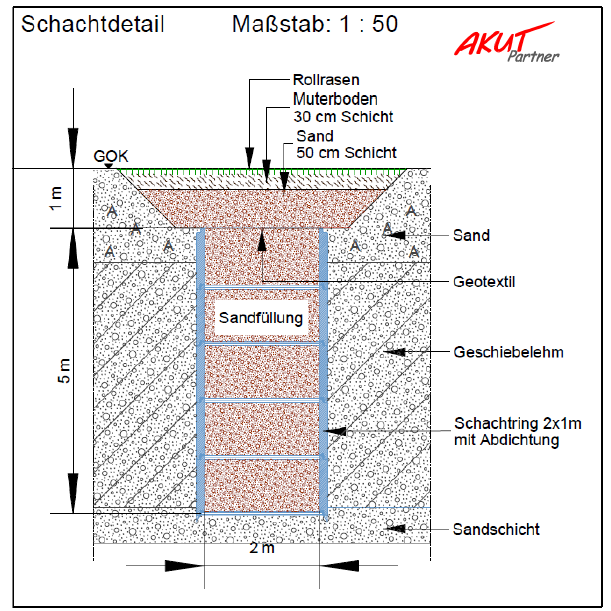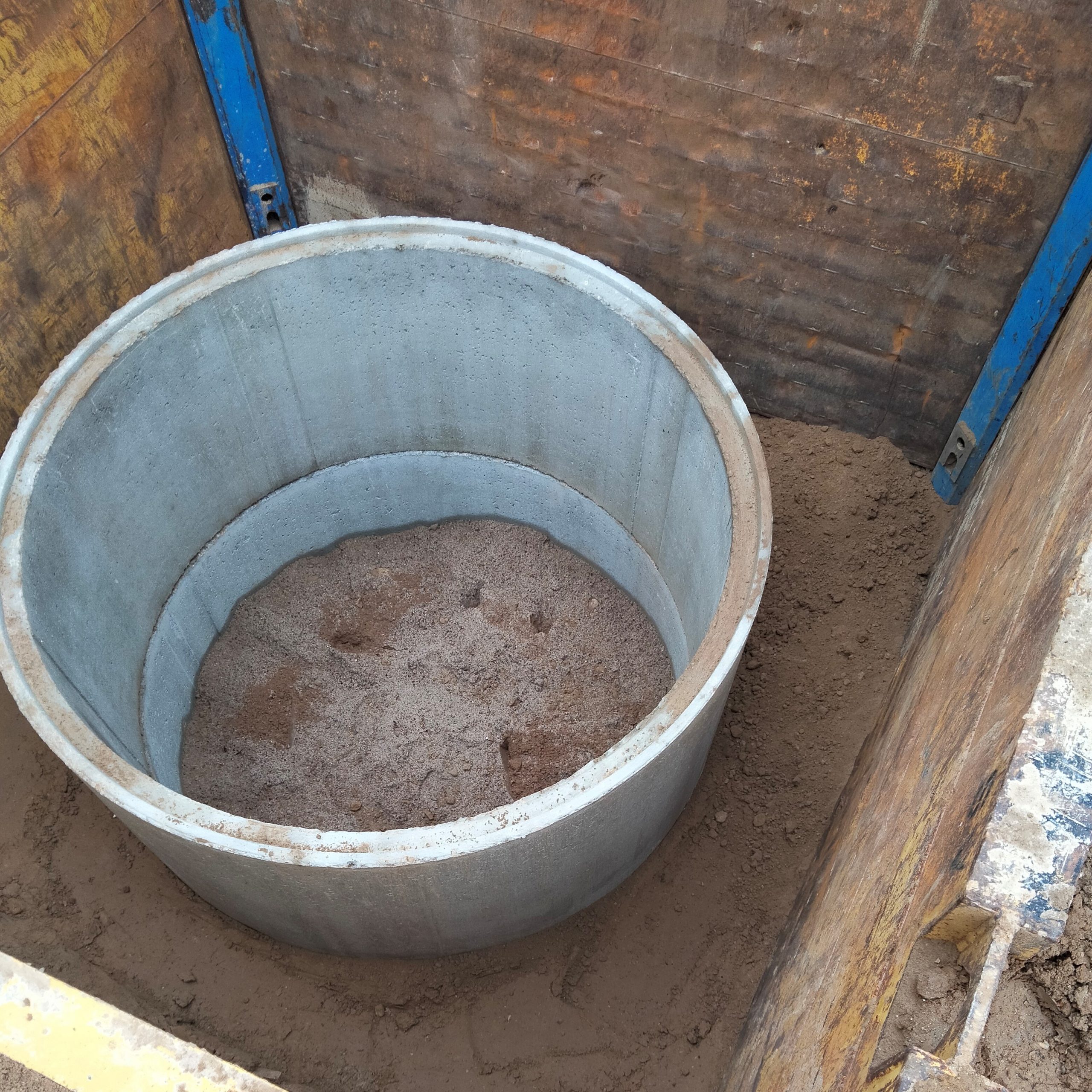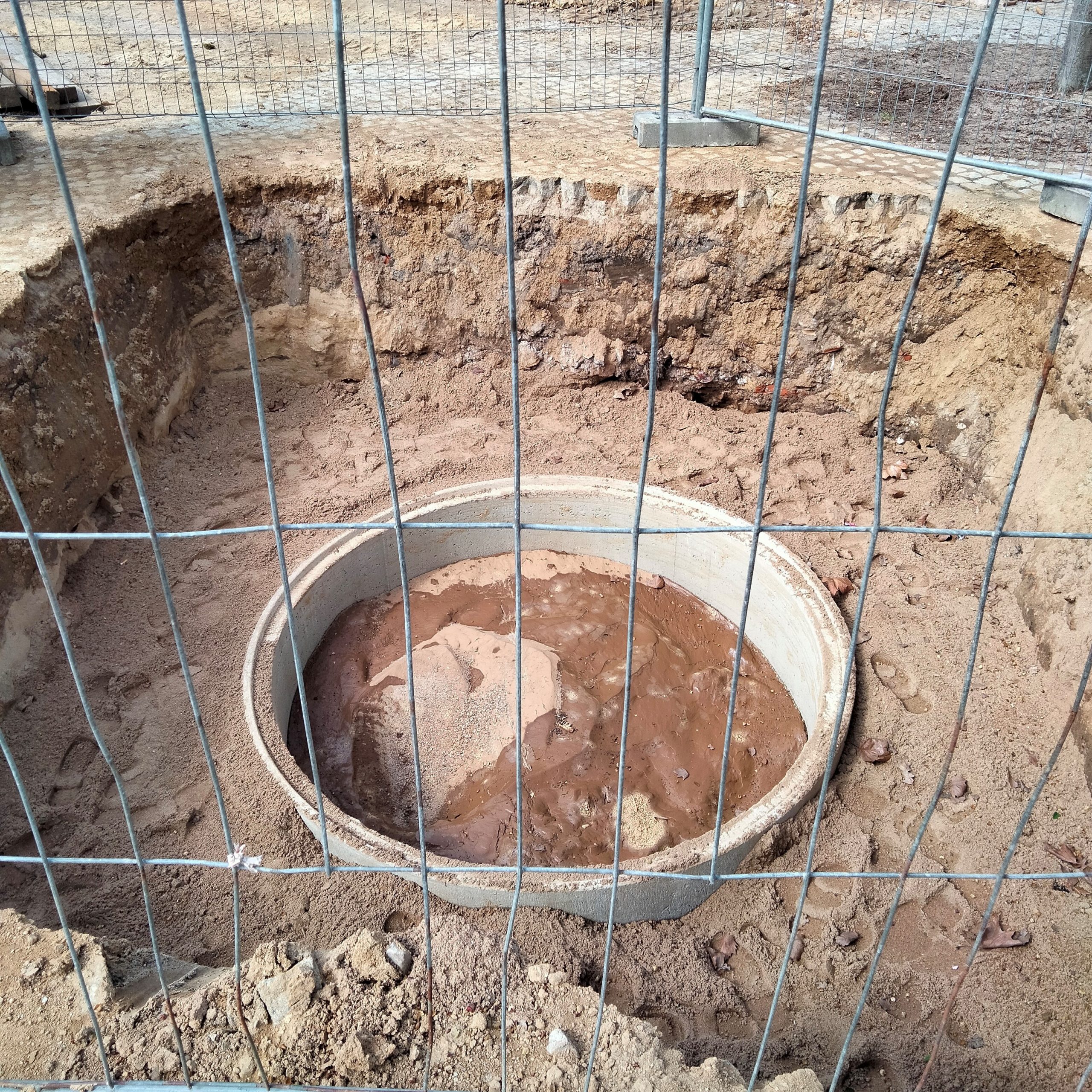
Stormwater management on difficult ground
Project services:
Inventory including existing infiltration systems in close coordination with the open space planning, the responsible building authority and the school
Dimensioning of the infiltration systems and retention volumes with proof of flooding
Application for permission under water law to pierce the waterlogging layers
Determination of locations and configuration of underground and above-ground plant components
Construction costs:
Estimated investment costs excl. the following landscaping measures
approx. 600,000 € net
High costs are mainly caused by earthworks and further civil engineering measures
Surface area:
9,500 m² sealed area on a plot of 15,000 m².
Additional requirement:
Largely water-impermeable boulder clay.





Challenge:
On the premises of a school in Berlin, the existing rainwater drainage systems are inadequate and caused damage to the building stock due to flooding. Due to expected recurring local heavy rainfall events, the new construction of infiltration systems became necessary to ensure flood protection in the future.
Except for some roof areas connected to the sewer system, most of the school grounds are drained by existing infiltration systems without overflow restrictors. These are located exclusively on the impermeable boulder clay layer of the Teltow Plateau and have not been able to adequately prevent previous flooding of the site.
The technical challenge of the construction project lies in the fact that for these areas there is also no further possibility of connection to the sewer system by means of a drainage throttle. To build and sustainably secure a functional infiltration system here according to the latest state of the art, it is necessary to pierce the surface layer.
The use of the site as a schoolyard and the interests of the elementary school children must thus be made compatible with the water management requirements for the infiltration areas.
Solution:
Due to the difficult local initial situation, an unconventional solution became necessary. The possibility of discharging into the water-conducting layers beneath the boulder clay at a depth of 4 to 5 m had to be discussed with the water authority. As a result, a case-by-case approval was granted by the authority for the penetration of the water-stagnant boulder clay layers via soil filter passages.
For this purpose, four 5-m-deep, sand-filled soakaways will be constructed under swales and 2 infiltration trenches will be installed in such a way that they will connect to the seepable layers. The site will be modeled to match this to change flow directions and create safe flooding areas.
Roof and yard areas will drain through an upstream sedimentation system into a large infiltration trench that will be constructed under a large schoolyard area. Connecting the infiltration trench to the seepable strata and creating a low-lying area relative to the rest of the site will provide another portion of the necessary flood space.
It is further planned to condition an existing infiltration trough so that it also connects to the seepable layer as a trough-rigole. This infiltration area will serve as a wetland biotope and enrich the school with a nature experience space.